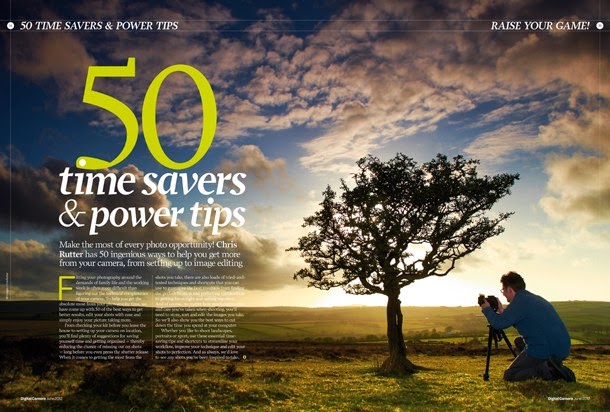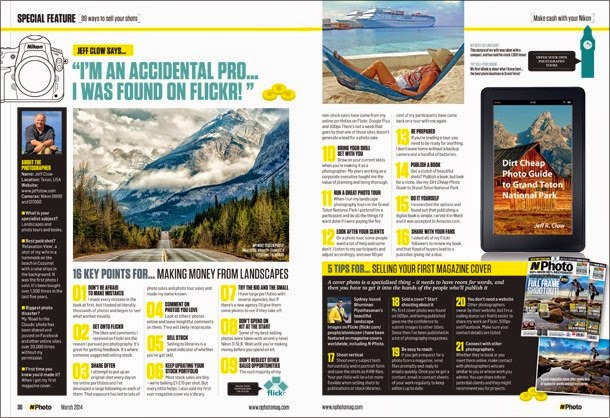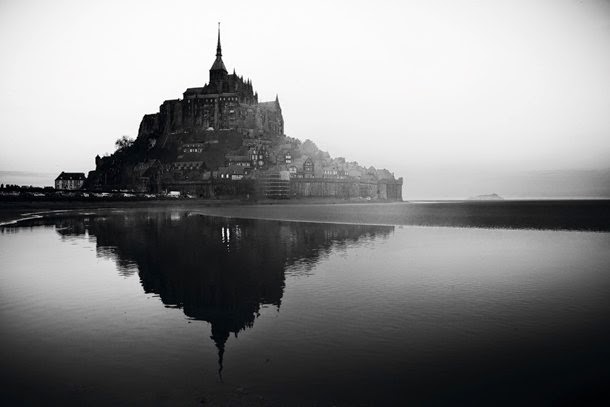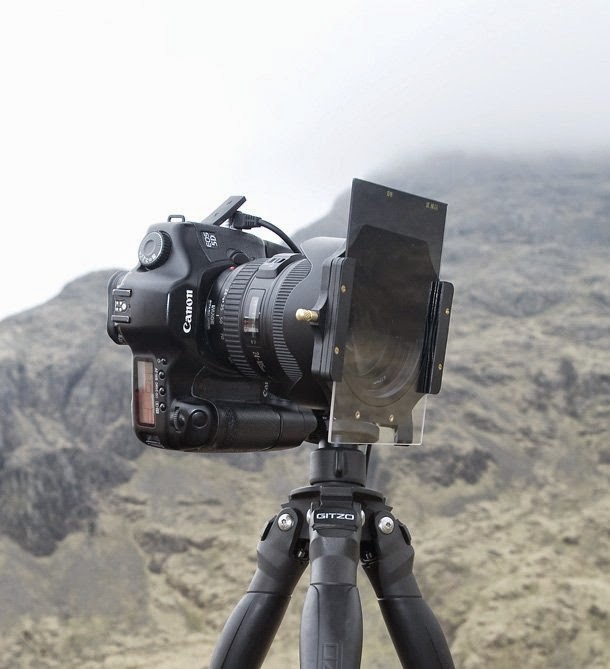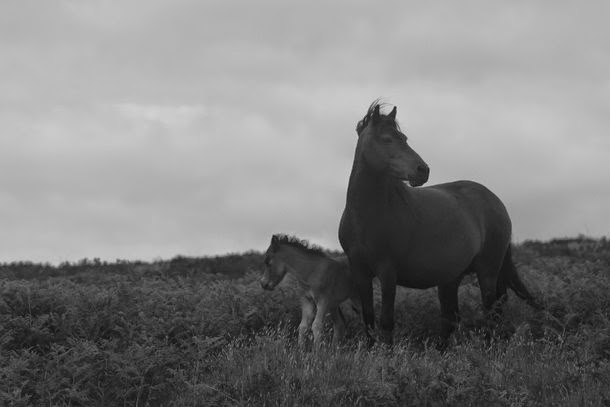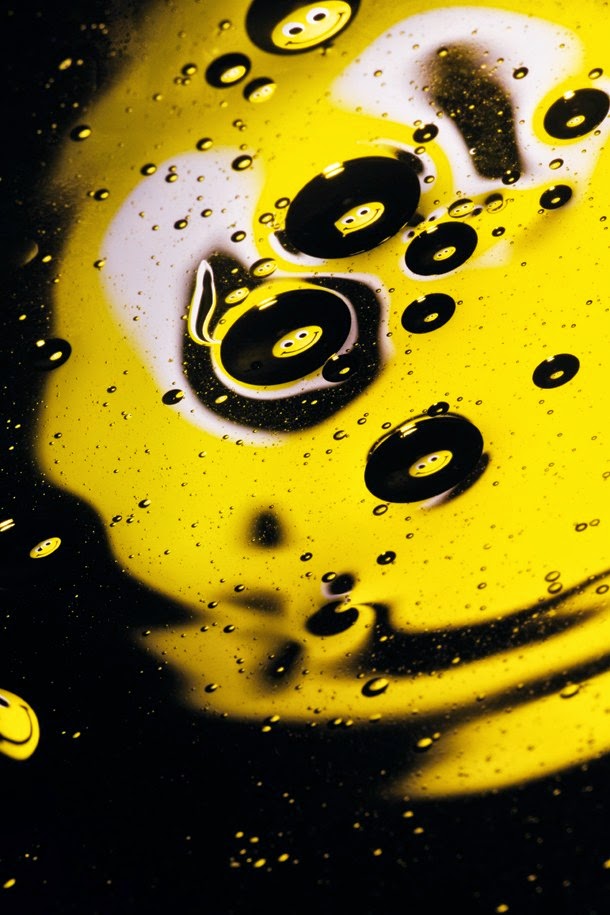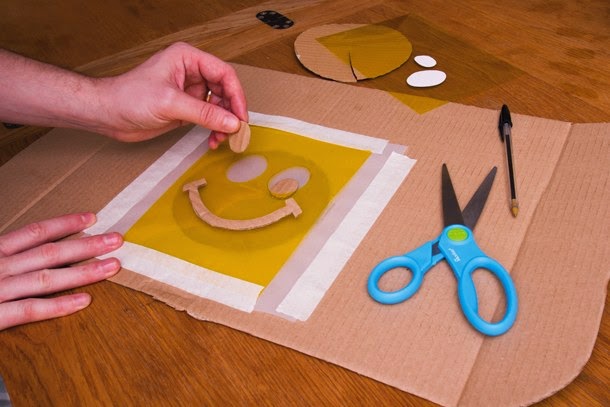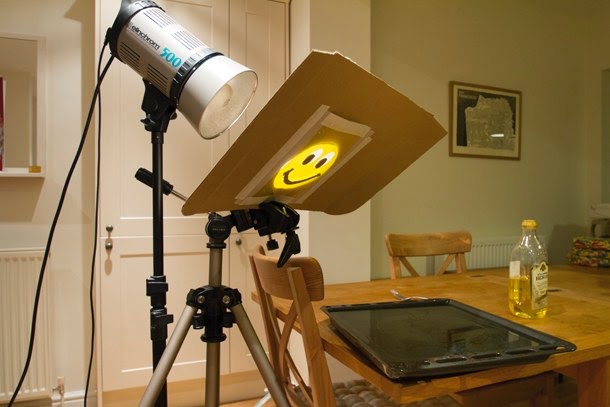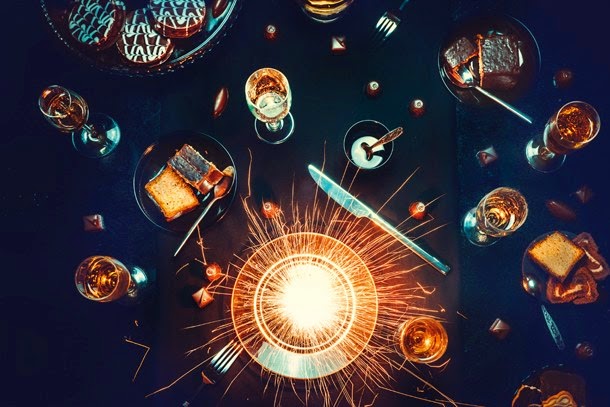As part of our ongoing series to
help you get more creative with your digital camera, each month we publish some
fun, seasonal, creative photo
ideas to help inspire your
imagination. Along with some amazing images, we’ve also provided some
quick photography tips by both amateur and professional photographers who are experts in these
fields.
We’re kicking off December with a
new list of exciting projects like making a naturalistic portrait, creative
still-life photo ideas, film effects in Lightroom and many more.
Creative
photo ideas for December: 01 Make naturalistic portraits
 |
Model: Tanay Ojha
Camera: D50 |
Shooting a good portrait is a
challenge in itself, but the work doesn’t stop there. How you finish the image
is important too. Skilful retouching in Photoshop or
Lightroom can make a good portrait great.
LA-based fine-art photographer Jessica Drossin has some useful
tips through her experience in this field.
“The key to creating a great
portrait is capturing the subject’s personality while documenting their
appearance in a flattering and interesting way,” she explains.
“To ensure that the focus is where
it belongs, decrease the saturation of a bright background object, blur
unimportant details, and clone out distracting elements.”
When it comes to retouching the
face, Jessica insists that subtlety is all. “I like to reduce
the appearance of pores, soften any discolouration under the eyes, and
clone out any stray hairs from the face. Resist the temptation to get
carried away – plastic skin and glowing eyes will distract, and all anyone will
notice is your retouching.”
Jessica is clear that getting the
right colours (when you’re not shooting in mono, like
the shot from Jessica shown here) is also important.
“Your colour choices do a lot to
determine the mood of your portrait. Warm tones will imply happiness and
health, while cooler tones will create a moodier, more complicated
interpretation of your subject.
Adjusting colours can help to pull
an image together, creating an overall consistency of tone.
For most portraits, I recommend
increasing the saturation of skin tones to add more vibrancy. But be careful
not to overdo it.”
Get started today
* A wide-aperture lens is essential to capture blur out distracting
backgrounds.
* Use single-point AF and carefully set the AF point over the eyes.
* Experiment with crops in Photoshop to make your
compositions even stronger.
Creative photo ideas for December: 02 Start a creative
still-life project
Late autumn and winter means
inclement weather and increasingly short days, so why not try some creative
photography indoors?
There’s more to this type of
photography than shooting water droplets, though. If you’re seeking some
creative inspiration, check out the work of Dina Belenko on 500px
Dina describes her work as photo
illustration, but she is schooled in the traditional disciplines of still-life
photography.
“A great place to start is with a sparkler,”
she explains. “Expose it for about a second or half a second, depending on
the scale of the scene, and you can get beautiful fiery trails.
“In the image here, I stuck a
sparkler on a plate with Plasticine, then introduced other elements.
I moved the glass and chocolates closer to the sparkler, so the sparks
could bounce off them. After that I placed the camera on a tripod, set the
shutter speed to 1.3 seconds and lit the sparkler. It burns for quite a long
time.”
Dina is also a big fan of smoke in still-life photography. “All you need is a
dark background, a backlight, and incense sticks. Lots of them. They are much
cheaper than a fog machine, more accessible than dry ice, and safer than an
open flame.
“For my ‘Betelgeuse Travel Corp’ image, I used about 15 incense
sticks. I covered the bottom of a suitcase with foil to protect it from hot
ashes, inserted an LED lamp and lit the sticks. For my‘Voices’ image, I used just one stick, and placed it on
the bottom of a miniature telephone box, so that the smoke could rise
right inside it.”
Get started today
* Smoke effects look
mysterious and beautiful, but it’s best to work in a well-ventilated room!
* Lots of these techniques involve slow shutter speeds, so a tripod and
remote release are essential. If that seems a bit cumbersome, try a compact
camera support such as the Joby Gorillapod.
* Dina is also a wizard at making sugar look like snow. Powdered sugar or
flour gives a nice snowfall effect, she says. “You can even make a real
blizzard, if you sprinkle it forcefully enough and choose and the right shutter
speed.”
* Dina is also famous for her images of splashing coffee or other tinted
liquids, for which she uses a syringe and a flashgun, and applies a fast
shutter speed.
Creative photo ideas for December: 03 Make a
photo mosaic
 |
| Photo by Danish Photographer: Andreas Olesen |
There’s more to panoramic
photography than yet another long thin shot of Durdle Door. Danish
photographer Andreas Olesen has won critical acclaim for his enigmatic
‘Superposition’ project, which he has been working on for nearly 12 years.
“It started when I was given an
Olympus PEN D half-frame camera by a friend, and I began making panoramic
landscape images with three-to-five frames per image,” he says.
“I was really attracted to the
aesthetic of panoramas composed of several frames, and I had my first solo
show in 2006 with those images.
“Then I started to think about the
interesting aspects of the format over a single-frame image, and I realised
that there was the perfect chance to play with ideas about time in photography,
as well as expanding the scope of the image to include more frames.
“I bought an old PEN F half-frame
SLR and an adaptor so I could use my Nikon lenses, which would give me the
ability to construct much larger images.”
Get started today
* Andreas uses a film camera, but
his multi-frame technique can work just as well with digital technology.
* Andreas draws inspiration from the aesthetic of the negative. “The black
images between the frames are the actual blank space between shots on the roll
of film. Each image is titled with the amount of time there is between the
different shots that make up the image.” Why not arrange your images on grids
in Photoshop to see if you can achieve a similar effect?
* This kind of fine-art project takes patience and perseverance. “It comes
down to constantly honing your craft, and you need to get used to rejection
too, especially when approaching galleries or image buyers.”
Creative photo ideas for December: 04 Try gig
photography
Gigs and other kinds of musical events can
generate great images all year round.
If you can’t get a photo pass, don’t despair:
many venues and artists still allow you to shoot with compact cameras and sometimes
even DSLRs, so it’s still possible to get good shots at gigs and events while
you’re back in the crowd.
A compact with a long built-in lens is
essential, but whatever camera you use, you’ll need to be discrete and work
quickly. Be careful not to annoy other people – especially the performers.
Get
started today
* Long
lenses help you to isolate the performers from waving hands from the crowd and
stage clutter.
* Image stabilisation is a must when you’re
shooting at longer focal lengths, in order to minimise camera shake.
* The light at gigs and events can change constantly, but it will be poor
generally, so choose a wide aperture (f/2.8 is ideal, if available) to let in
lots of light.
* If you’re not close enough to use flash (or you’re not allowed to use
it), you’ll normally need to set a high ISO, which also gives faster shutter
speeds.
* Accurate focusing is important. For the shot above, Digital Camera
magazine’s deputy art editor Shona Cutt used Continuous/AI
Servo AF, keeping the AF points trained on the face.
Creative photo ideas for December: 05 Emulate
film with Lightroom presets
As any wedding photographer will tell you,
getting the ‘film’ look in portraits is all the rage at the moment – but it’s
not just about wedding images.
We’ve
entered a post-Instagram age, where adding a retro look to a photo is no longer enough.
There’s now a big demand for sophisticated Lightroom presets and Photoshop
Actions that emulate the look of classic film and scanners.
It’s
not hard to understand why. Until digital came along, some truly wonderful film
stock was being made. One thinks of Kodachrome, loved by Steve McCurry, or
Velvia, a big hit with landscape photographers.
With presets, you can have the best of both
worlds: the potentially rich tones of film and the convenience of digital.
Lightroom presets are particularly easy to
use. All you need to do is drop them into the Develop Presets folder, then
restart Lightroom. You then get a quick one-click fix that can significantly
reduce your image-processing time and help to keep your stylistic images
consistent.
Creative photo ideas for December: 06 Shoot
traffic trails
Winter nights can seem boring for
the keen photographer, but here’s a great technique to try all year round.
Use a long exposure to get cool traffic trail effects when cars drive by.
It’s one of those techniques that is very
hard to get on a smartphone and a pain to replicate in software, so it will
mark you out as a skilled photographer. Actually, traffic trails are not that
hard to take, but you do need to prepare carefully.
First, find a suitable (but safe) location.
Try standing by a busy junction controlled by traffic lights, or a slip road or
a roundabout, where you’ll get vehicles coming past at different speeds.
Capturing vehicles when they are turning can
create interesting effects too. You’re using a slow shutter speed, so you need
a tripod and cable release to keep the background sharp.
Creative photo ideas for December: 07 Be
inspired by the Royal Photographic Society
The Royal Photographic Society of the UK is the
oldest photographic society in the world, and possesses an unrivalled
collection of historic photographs and artefacts.
We’re talking over 250,000 images, 8,000
items of photographic equipment and 31,000 books, periodicals and
documents.
The cream of this collection, set up at the
behest of Queen Victoria’s consort Prince Albert, is to go on show in early
December at the Science Museum in central London.
This unique and historic exhibition features
some of the earliest known images, dating back to the 1820s, by pioneers of
photography such as Roger Fenton, William Henry Fox Talbot and Julia Margaret
Cameron, alongside contemporary works by Don McCullin, Terry O’Neill, Martin
Parr and other modern greats.
That’s over 150 years of photography
inspiration under one roof. If you only go to one show this winter, make it
this one!
Get
involved today
* The exhibition is called Drawn by Light, and opens at the
Media Space in London’s Science Museum on 2nd December. It will run until 3rd
March next year, and tickets cost £8. Full details are at www.sciencemuseum.org.uk.
* There’s so much inspiration to be had from the images, that it’s hard to
know where to start, but what’s particularly interesting is how photography
found its own voice in the 19th century, and emerged as an art form in its own
right as the technology improved – rather than being the poor relation of
painting.
* A purely technical analysis of the images on display rather misses the
point (the best photographs are always greater than the sum of their parts),
but it’s worth paying particular attention to composition. There will be
nothing in the frame ‘by accident,’ that ends up unintentionally distracting
you – so think about how you can apply this core principle to your photography.
Notice too how often many great photographers ‘break the rules’.
Creative photo ideas for December: 08 Freshen
up your food photography
Great food photography isn’t just about
capturing mouth-watering shots of an elaborate banquet: it can encompass many
different types of food imagery, including fast food and the increasingly
fashionable street food.
Then there is food and restaurant culture,
how food is prepared and served, the people who produce food and so on. Really,
there are as many different types of food photography as there are cuisines.
That said, as with all photography, it helps
if you have some kind of connection with your subject. Maybe you are friends
with the chef or farmer, love the restaurant or love that particular type of
street food.
Many
of the principles of portrait photography apply to food. You
need to get close enough to the subject, and carefully set the focus where you
want it to be.
Shooting with wide apertures helps, as it
helps blur out distracting backgrounds and comes in useful in the low
light of a restaurant.
Get
started today
* It’s
fine to use flash, but make sure the light is not overpowering or unnatural. Off-camera flash and studio lights
make food look great.
* There are various ways to make food look appetising; cooking it will
help, as the steam can make it look tastier. Squirt a little water on fruit or
vegetables to make them look fresher.





